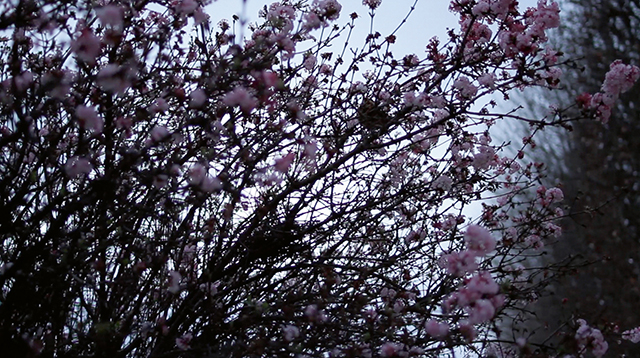Il se peut que la beauté ait renforcé notre résolution - Masao Adachi

“A to and fro between politics and cinema, between Trotskym and Surrealism, between armed struggle and screenplays, between Palestine, Lebanon and Japan, between the day-before-yesterday and today, between beauty and resolve, between the art of eating and that of being a father, such is the risky and precise life of Masao Adachi, the monsieur with the white hair glimpsed in his delusions. And this is just how Philippe Grandrieux, faithful to his way of doing things, decided to suggest his portrait, with no a priori, without interrupting speech, filming him and listening to his words without at first understanding them, framing him in a tight close-up that is sometimes underexposed, other times overexposed, to better abandon him later for: cherry trees in blossom, the streets of Tokyo swarming with cars and passersby, familiar objects and lactescent celling light. And from time to time, Grandrieux lets speak a few shots from his earlier films, from where suddenly crops up the phrase, Genet-like, given in the title: a paradoxical program that hesitates to connect one shore to the other”. (Jean-Pierre Rehm)
Sombre

“There is something profoundly new about Grandrieux’s plastic exploration of violence, but also something very contemporary. His approach is not based on such editing and framing effects one finds and admires in Hitchcock and Ray, nor in an exploration of excess as in Tarantino. He works on the inside of an image, on the special relation between the luminous content and the vibrant and fragmentary figuration. Grandrieux may ‘tell’ the story of a serial killer in Sombre, but the violence is both removed from the story and heightened: it descends with its hero into the dark, in scenes of a carved-up female body, captured with a hand-held 35mm camera. As Raymond Bellour observes in his eulogy and lively defence of the film, ‘Pour Sombre’: ‘[the camera places us] among the bodies, into situations of unmitigated suffering, in order to confront us, despite the brutality of the acts, with ambiguous content, in a constantly disrupted fusion’.” (Christa Blümlinger)
Un Lac

“Instead of the heavy 35mm camera painfully held on the shoulder for Sombre, it’s with a small DV camera (and all that it involves) that Grandrieux has shot Un Lac, with a freedom of mastered improvisation which is felt throughout the entire film (...). And thus the camera’s most directly sensitive recording capacity accompanies a will of great abstraction in the way that Grandrieux treats each of the components of the film, in the editing and the sound design, which is entirely constructed, as well as in the decision of lowering the level of light sensitivity, carefully respected from the shooting to the digital colourgrading and the blowup to 35mm. All of this seems to suggest that we are in front of a new way of negotiating the relation between the ‘two biggest trends in cinema, the design-tendency and the recording-tendency’. Serge Daney added ‘two ways of engaging the inhuman in the human’, explaining that it would be ‘in the middle, the ‘scene-tendency’ (...) that the inhuman is kept at a distance’.” (Raymond Bellour)